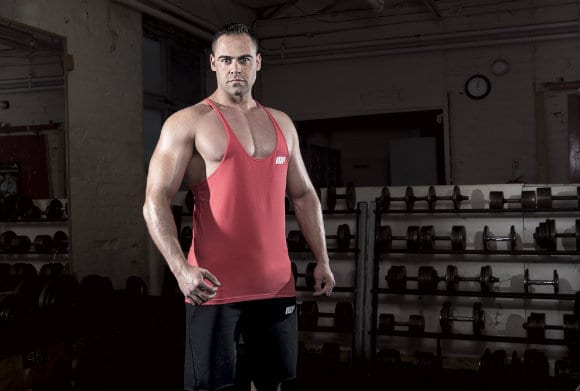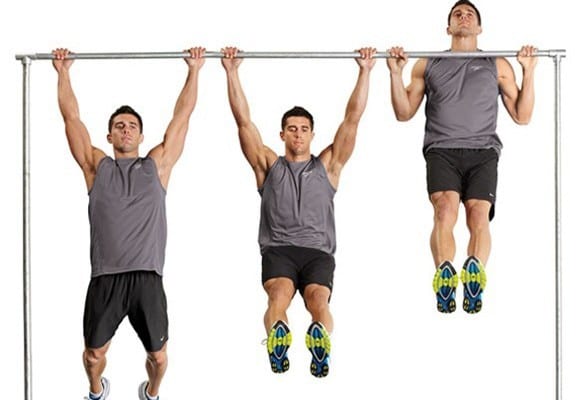By the healthiergang writer , student in Medicine and Surgery.
Butterfly Pull-Up
In the world of functional training and Cross-Training, tractions, that is pull-ups are a must in any workout o workout of the day.
In other articles we have seen how we can perform them in the home and in the gym, generally choosing the basic technique, that is the traditional pull-ups that do not involve large swings; in fact in the execution of the exercise we tend to minimize the movements of the body, bringing us to the bar with a single movement up to surpass it with the chin or touch it with the chest.

In this way we focus our attention on strength development, as the main muscle recruitment is in favor of the back muscles (Great Dorsal, Small and Large Round, Deltoid, Lower Bundles of the Trapezius, Adductors of the Scapula, Long Head of the Triceps) and the flexors of the upper limb (biceps brachialis, brachioradialis and brachialis).
We have also seen the triple typology of possible handles (prone, supine and neutral grip) with which we can emphasize the work on the various muscle groups involved.
The variant that we are going to analyze today is the point of maximum expression in terms of speed and coordination, not suitable for everyone, especially beginners and people with poor joint mobility (mainly shoulder blade and hip) which, in terms of strength development, is not not even taken into consideration, but which allows you to maximize the number of repetitions in a short period of time.
variants
Between the Butterfly variant and the Strict one (i.e. the traditional one) there is an intermediate step, the Kipping pull-up, which are placed in the center because they allow you to increase the number of consecutive repetitions of tractions but require good strength and coordination; it is therefore necessary to know how to master the first two types of traction to switch to the Butterfly.
There are some key factors to keep in mind when performing Kipping: the movement does not involve only the back and arms but starts from the lower limbs which give a good dose of thrust to the body; this thrust is transmitted thanks to the stabilization of the core to the upper portion, in order to balance the force used in lifting throughout the body.
The oscillations are guaranteed by an alternating work of the extensors and flexors of the hip as well as of the abdomen and back, and the knowledge of the positions of Hollow and Superman are not optional, in fact they guarantee the continuity of the oscillations.
execution
Moving on to Butterfly the execution of the gesture can be divided into various phases:
- The beginning of the swing: starting from the shoulders and then alternating the positions of hollow and superman position
- Involvement of the lower limbs: from the superman position, the legs are brought towards the bar (or rings) and at the same time the torso is moved away from the vertical of the bar using the arms
- Traction: from here you move in a traction movement until you touch the bar with your chest trying not to hit it
- Removal phase: from the previous point, forcefully remove the torso from the bar using the arms and continue
- Return to swing: the legs are brought back restoring the initial position of "superman" and from here, with a fluid movement we start again for the next repetition.
In the stages of involvement of the lower limbs, there are various recruitment strategies: some, in the previous variant, prefer to start the movement with a kick that from the superman position first pushes the knees and then the pelvis towards the bar, continuing in this “pedaling” type movement.

Considering the muscular involvement therefore we have in addition to the action of the back muscles also the contribution of hip flexors and extensors in the swing phases and the recruitment of the extensor muscles of the arms and pectoral in the phase of moving away from the bar, with a constant action of the Core which guarantees the transmission of force.
Exercise tests our metabolic and nervous capacity as well as the muscular one, especially at the beginning, when the movement is still immature. To improve the execution it is good to first check the arched and hollow positions perfectly because in this way the transition phase from one repetition to the other will be more fluid and continues stressing the shoulders and the low back as little as possible.
Here the grip is only one, the prone one, because the degree of extension reached by the shoulder is easily allowed in this case, unlike both the prone and neutral grip, where the position of the humerus is not ideal for reaching the right degree of extension.
Common mistakes
The most common mistakes concern the pulling and pushing phases. In the first case by not climbing enough and thus invalidating the repetition; in fact, the chin must be brought slightly above the bar, so as to facilitate the descent and push-down phase.
In the second case, instead, generate the movement from the back and not from the hips and legs, which can lead to lower back pain. Surely for this exercise the support of a cross-training expert becomes very important to minimize errors and reduce the risk of injuries.
The various video tutorials that can be found on the internet are also very interesting and certainly give us a big hand in learning the exercise.
Good workout!


























